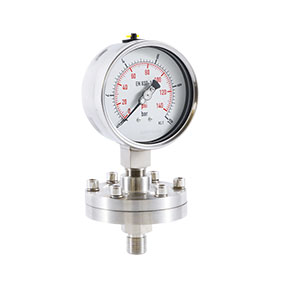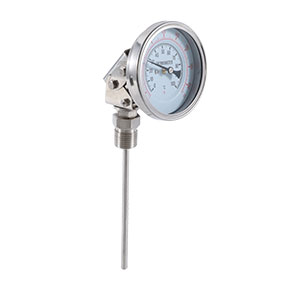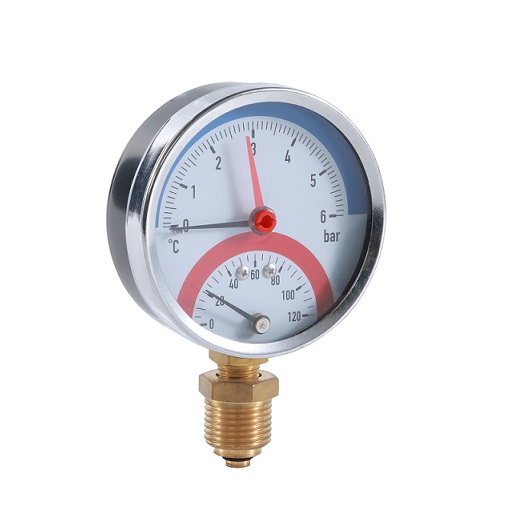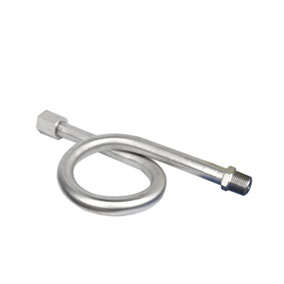How to Choose the Right Pressure Gauge
When it comes to various industries, the selection of the right pressure gauge is a critical decision. Pressure gauges play a crucial role in providing essential information about pressure levels in systems. Choosing the right pressure gauge ensures accurate measurements, enhances operational efficiency, and prevents potential damage to equipment or processes. This comprehensive guide aims to assist you in making an informed decision by exploring the crucial role of pressure gauges, essential features to consider, different types available, and factors to keep in mind during the selection process.

The Crucial Role of Pressure Gauge
Pressure gauges serve as vital instruments for monitoring and controlling pressure levels in a wide range of applications. They enable operators to ensure safety, optimize performance, and prevent any potential damage to equipment or processes. Accurate and reliable pressure gauges are essential for maintaining operational efficiency and avoiding costly downtime.
Essential Features
Several essential features should be considered when choosing a pressure gauge. These include the pressure range, accuracy, dial size, connection type, and materials used. Understanding the significance of these features will help you select a gauge that is compatible with your specific application and environment. For example, if you require precise measurements, selecting a gauge with a smaller pressure range and higher accuracy is crucial.
Types of Pressure Gauge
There are various types of pressure gauges available, each designed for specific purposes. Some common types include
1.Bourdon pressure gauge:It is a mechanical pressure gauge that relies on the deformation of a curved tube (Bourdon tube) when subjected to pressure. As the pressure increases, the tube straightens, which is then translated into a pressure reading on the gauge.
2.Diaphragm gauges:This type of pressure gauge uses a flexible diaphragm that deflects or moves in response to pressure changes. The movement of the diaphragm is then converted into a pressure reading.
3.Capsule gauges:Capsule Pressure Gauges are often called a Low Pressure Gauge and employ the use of a welded capsule housing two thin diaphragms. One diaphragm measures the pressure signal and the other is used as a reference point. The relative deflection of the capsule is then translated into a rotational movement through the use of mechanical linkages, causing the pointer to move around the dial of the gauge.
4.Differential pressure gauges:Differential pressure gauges are designed to guarantee accurate reading of pressure differences between two points of your process. Typical applications are e.g. filter monitoring, hydrostatic tank level measurement in closed tanks and flow measurement.
5.Liquid filled pressure gauge:A liquid-filled pressure gauge has a liquid-filled case, which helps dampen vibration and pulsations on the gauge dial allowing for more stable and accurate readings. They are capable of measuring the pressure of fluids, gasses, and vapors in industrial and commercial applications.The liquid, typically glycerin or silicone, also helps to protect the gauge’s internal components from corrosion and wear, making the gauge more durable and long-lasting.
Exploring the characteristics and applications of these types will assist you in identifying the most suitable gauge for your needs. Factors such as pressure range, operating conditions, and required accuracy will influence the choice of type.
Choosing the Right Pressure Gauge
Selecting the right pressure gauge involves considering several factors. These factors include the pressure medium, operating conditions (such as temperature and vibration), required accuracy, environmental considerations, and budget constraints. Evaluating these factors will help narrow down the options and make an informed decision. Additionally, consulting with experts or manufacturers can provide guidance in choosing the most suitable pressure gauge for your specific requirements.
Maintaining and Calibrating Pressure Gauges
Once a pressure gauge is selected and installed, it is crucial to properly maintain and calibrate it to ensure accurate readings. Regular inspections, cleaning, and calibration intervals should be adhered to. This helps maintain the gauge’s performance and extend its lifespan. Working with qualified technicians or following manufacturer guidelines for maintenance and calibration procedures is highly recommended.
Conclusion
Choosing the right pressure gauge is a critical decision that impacts the accuracy and reliability of pressure measurements. By understanding the crucial role of pressure gauges, considering essential features, exploring different types available, and evaluating various factors, you can make an informed decision. Remember, selecting the right pressure gauge enhances operational efficiency, ensures safety, and promotes the longevity of equipment and processes. Regular maintenance and calibration further guarantee accurate readings and optimal performance of the pressure gauge.




